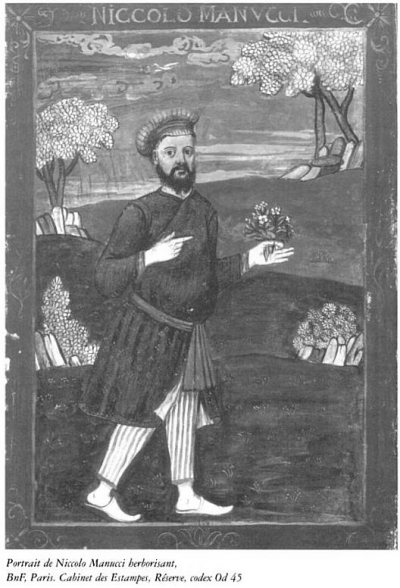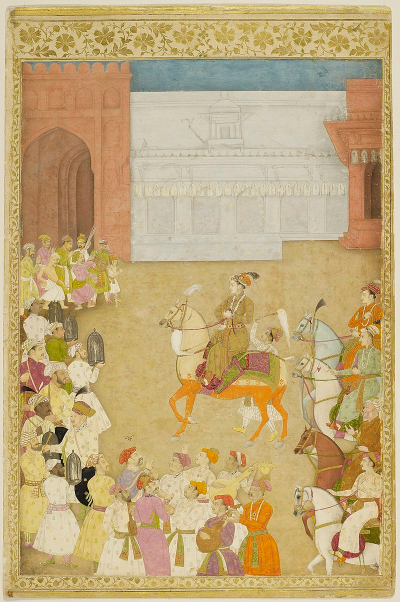When the Mughal Prince, Dara Shikoh was defeated by his brother, Aurangzeb, he had an Italian artilleryman in his employ by the name of Niccolao Manucci. According to Manucci, he was offered the chance to join Aurangzeb’s army but he decided to flee instead. In his memoir, Storia do Mogor (or Story of the Mughal), Manucci paints a fabulous picture of his life and casts himself as the long-suffering hero and Aurangzeb as the evil villain, his arch-nemesis. But can we believe him?

Time obscures the past from the present, and it is historians who must squint and puzzle out the blurry events of history. They would use first-hand accounts of travellers. But travelogues like the Storia are also commonly full of completely fabricated details. Which makes the job of the historian much harder!
Consider Marco Polo, one of the most iconic figures in history, an Italian merchant who visited the Mongol courts and travelled the length and breadth of the Silk Road. He is probably the most famous traveller in history and a common figure in school textbooks. But did you know that when he saw rhinos, he thought they were really ugly unicorns?
Niccolao Manucci was no different. His memoirs are full of factual errors and colourful lies. But through the work of scholars like Sanjay Subrahmanyam, we’ve pieced together some key details. Manucci was born in 1638 in Venice but came to India when he was just 17. He landed in Surat and was employed as an artilleryman in the army of the Mughal prince, Dara Shikoh. After Shikoh’s defeat, he worked for the famous Rajput king, Mirza Raja Jai Singh, but this too did not last long. Manucci’s travels and quests for employment took him from all over India – from Kashmir to Bengal, Goa to Madras.
The Italian tried to move to Goa, probably to be closer to other Europeans, but despite multiple attempts, he was never able to successfully plant roots in the Portuguese enclave. Instead, he worked for other Muslim rulers in Lahore and then the Deccan. Because he was Italian and thus unaligned with any particular power in the subcontinent, he was able to segue between kingdoms and rulers. But his constant jumping back and forth between European and Indian employers soon meant that he wore out his welcome with both. Thus, Manucci fled south during the 1680s.

It was in the south that Manucci finally settled down. He was close friends with the founder and governor of Pondicherry, Francois Martin. And he developed a good working relationship with the English East India Company, using his experience to act as their intermediary with the Nawab of Arcot. He married, grew wealthy and built two houses – one in Pondicherry and one in Madras on St. Thomas Mount (or Parangi Malai, meaning ‘foreigner’s hill’). He also earned a reputation as a physician, combining stray bits of Siddha, a medicinal tradition native to South India, that he had learned from local practitioners and whatever tricks that had worked for him over his many decades in India. Because he had no formal training, he was more quack than doctor, but that didn’t seem to stop him garnering some level of success.
It was when he was in Madras that he began writing his epic work, Storia do Mogor. As he finished each volume of the book, he would send it by ship back to Europe to be published. He might’ve written even more but personal tragedy struck. In quick succession, he lost his wife, Elizabeth, as well as his close friend, Francois Martin. Ironically, his self-proclaimed nemesis Aurangzeb also died around the same time. Manucci himself probably passed away in Madras around 1720.
The 5 volumes of the Storia are a fascinating view into the 17th-century world of India, but without scholars and historians who quietly piece together the truth, they would be as unreliable as weather forecasts of the rain.

If you’d like to hear a little more about the fight between Dara Shikoh and his brother Aurangzeb, download the Storytrails app on the Play store and the App store and listen to our trail through the Indian Paintings Gallery of the National Museum in Delhi.
Archives
- January 2022
- December 2021
- November 2021
- August 2021
- March 2021
- February 2021
- January 2021
- December 2020
- November 2020
- October 2020
- September 2020
- August 2020
- April 2020
- March 2020
- February 2020
- January 2020
- November 2019
- October 2019
- September 2019
- August 2019
- July 2019
- June 2019
- August 2017
- February 2017
- January 2017
- October 2013
Featured Posts
- Tales that pots tell: Keeladi excavations AUGUST 18, 2021
- The Last Grand Nawab: Wallajah FEBRUARY 10, 2021
- How Tej Singh became Raja Desingu of Gingee FEBRUARY 5, 2021
- How Shahjahan seized the Mughal throne JANUARY 28, 2021
- Alai Darwaza – Qutub Minar Complex, Delhi NOVEMBER 21, 2020
- Marking History through British buildings NOVEMBER 17, 2020
- The last great queen of Travancore NOVEMBER 7, 2020
- Brahmi and the evolution of scripts OCTOBER 15, 2020
- The Cambodian King of Kanchipuram OCTOBER 14, 2020
- James Prinsep – the man who read the writing on the wall OCTOBER 10, 2020
- Mariamman – the Village Goddess who travelled SEPTEMBER 30, 2020
- Misnamed Monuments of Mamallapuram SEPTEMBER 28, 2020








